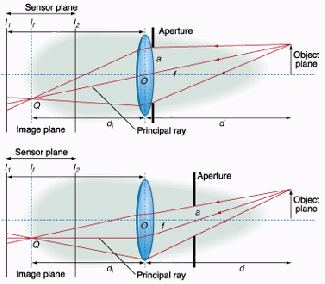
Manufacturers provide objective lenses with standard magnifications usually ranging from 2 to 100×. Objectives that have been corrected for aberrations are further defined by the wavelength requirements and the tube length of the microscope. The optics of the microscope objective are defined by the focal length, N.A., and field of view. Although this technique is of no diagnostic benefit, the results can be spectacularly beautiful. The use of colour filters, pioneered in the closing years of the 19th century by British microscopist Julius Rheinberg and now known as Rheinberg illumination, allows one to practice a form of dark-ground microscopy in which the background and the specimen are in contrasting colours.

Thus, the dark-ground, or dark-field, condenser illuminates specimens against a black background and is eminently applicable to the observation of structures such as bacteria and flagellated cells in water. Achromatic condensers followed, but they are more troublesome to use because they need precise focusing, and the working distance is short.Īpart from condensers that are matched to specialized objectives (such as phase-contrast systems), others are available for specific applications. More-complex designs followed, their development driven by the peculiarly English obsession of observing fine details on diatom frustules. To obtain optimal use of the microscope, it is important that the light from the source both covers the object and fills the entrance aperture of the objective of the microscope with light.Įarly microscopes had as their condenser a single lens, which was fixed in the end of the instrument facing the lamp (as in barrel microscopes) or mounted below the stage (as in the Bancks microscopes used by Robert Brown, Charles Darwin, and others). The advantage of the latter approach is that nonuniformities in the source are averaged in the imaging process. Alternatively, the image of the source is focused onto the condenser, which is in turn focused onto the entrance pupil of the microscope objective, a system known as Köhler illumination. Typically, the condenser focuses the image of the light source directly onto the plane of the specimen, a technique called critical illumination. The condenser is placed below the stage and concentrates the light, providing bright, uniform illumination in the region of the object under observation. In a modern microscope it consists of a light source, such as an electric lamp or a light-emitting diode, and a lens system forming the condenser. The illumination system of the standard optical microscope is designed to transmit light through a translucent object for viewing.

The system lens how to#



 0 kommentar(er)
0 kommentar(er)
